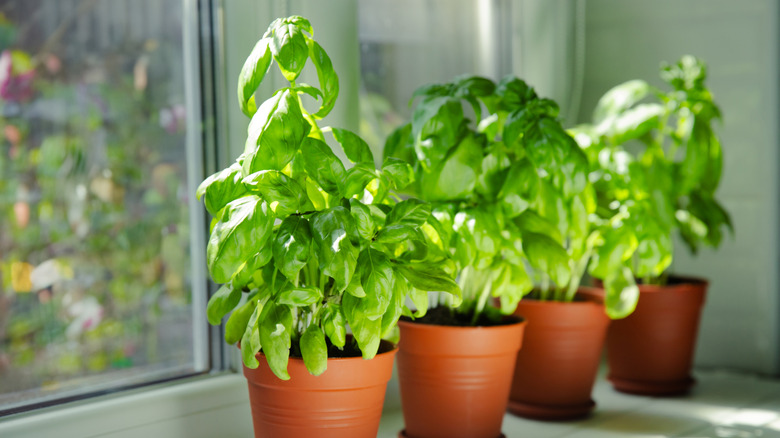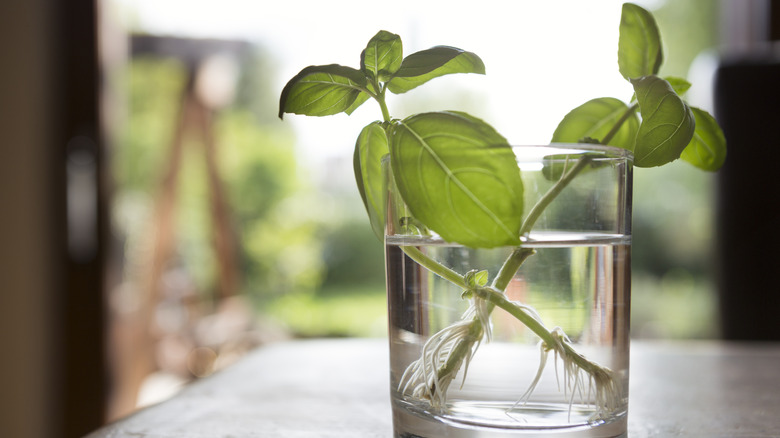How To Propagate Basil Cuttings For A Year-Round Harvest Of Fresh Flavor
One of the most popular sweet herbs and spices to grow in home gardens, basil also has the distinction of being one of the easiest to cultivate. Hailing from tropical Asia and Africa, this fragrant herb is a member of the mint family. It grows in USDA Hardiness Zones 2 through 11 — though it may be best grown in zones 9 through 11 — and favors full sun and well-draining soils with moderate levels of moisture and richness. Although a nice sunny area outside or in a greenhouse is the best locale for basil plants, you can also grow basil in indoor containers.
Basil can be easily grown from seeds, particularly if you start them indoors in early spring and transplant them outside once the frosts have passed. However, if you're desperate for more fresh-grown basil to use in your kitchen — who can get enough caprese salad, pesto, and basil lemonade, after all? — it's actually quite easy to increase your basil yield by propagating cuttings in a glass of water. With some simple preparation and maintenance, you can ensure a steady supply of free basil all year round.
How to propagate basil
You can begin the propagation process by selecting your healthiest, tastiest basil plant. Once you've selected your parent plant, look for a stem that is at least four inches long and that doesn't have a crown of flowers or seeds. Use scissors or a knife to take a cutting of approximately four inches at a site just below a leaf node, making the cut at a 45-degree angle. Don't worry, this won't hurt your parent plant; in fact, cutting (or "topping") is one of the best pruning techniques for fuller basil plants in the garden.
Once you have your cutting, remove all of the leaves at the bottom of the stem — make sure you don't have any leaves left where the stem will be submerged — and place them in a glass of water on a sunny windowsill, preferably one that faces the equator. Roots should start to grow in approximately one to two weeks. Once they're around two inches long, you can transfer them into soil, either in a pot or in the ground. If you live in an area that frosts or freezes during colder months, you can easily keep your new plants indoors over the winter. Just make sure you've done your research on the best soil for indoor basil plants.

